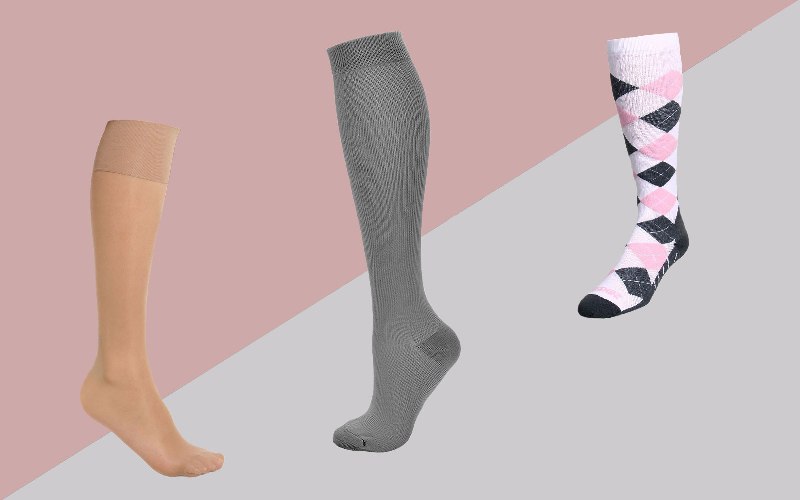
Where to Find Stylish Compression Socks for Women
Ladies, it may be time to invest in a high-quality pair of compression socks if you’ve ever suffered from aching or swelling feet after a long trip. Specifically built to add pressure to the feet and calves, these flexible socks improve blood supply and avoid blood clots and swelling in the lower legs. Plus, on even the chilliest of trips, there is the extra advantage that they can hold the feet warm and toasty.
Compression socks should also be used outside of airlines, in addition to doing wonders on long journeys.
What are the degrees of compression?

Compression amounts are calculated in millimeters of mercury, the volume of pressure added to your extremities (mmHg). The greater the amount, the greater the compression. The various compression stages fulfill various objectives. They are mostly recommended for individual medical problems by physicians, although they have non-medical effects, too. At the bottom of this article is a map that defines the situations under which compression apparel is typically prescribed and the compression degree recommended for certain conditions.
- 8-15 mmHg: This is the lightest compression type that is perfect for the legs to be energized. Socks offer relief from weary and achy legs at this compression stage. By softly improving airflow in the legs, they also help manage mild swelling.
- 15-20 mmHg: 15-20 mmHg mild compression offers relief from mild to severe swelling, pain, and varicose veins, especially during pregnancy. They are great when driving to avoid deep vein thrombosis (or economic class syndrome), but they are still ideal for someone who is standing or seated for lengthy periods of time.
- 20-30 mmHg: 20-30 mmHg compression socks, the most commonly used level, provide solid compression and can be used to manage a range of mild to severe conditions. This degree will offer relief from varicose veins, edema, post-sclerotherapy, and deep vein thrombosis. This degree is often referred to as solid compression or Class I.
How can I find the right women’s compression socks?
Sheer types of socks for women:

Compression socks for women must be Lightweight, clear and trendy. Sheer fabrics are Sheer compression stockings, available from all our labels, make compression simple to combine with any trendy wardrobe. Sheer fabrics also do not have as much swelling containment and are less durable to snags and runs. The trade off here is that sheer styles appear better, but are not as robust or successful in certain situations.
Anyone who spends extensive amounts of time on their foot may also be used as a preventative method to preserve stable legs. Very literally, the powers of gravity raise the friction inside the veins of the legs as we remain still for long stretches, where the greatest impact begins at the ankle and eventually diminishes the leg and torso. This strain is based on the longitudinal distance from the heart to the foot of the column of blood. In order to counter the impact of higher venous pressures, gradient compression stockings are built with the highest pressure at the ankle and decreasing as it travels up the thigh.
Conclusion:
Compression therapy drugs are placed on in the morning following emergence, which is usually until any substantial swelling happens, and only withdrawn in the evening. The compression stops blood from pooling in leg veins during the day, which helps the general circulation and decreases or removes any swelling in the leg that you might have.
Of course, owing to variations in the brands of compression stockings available, it must be remembered that measurements can vary. But note the individual makers of compression stockings have their own scale map for compression socks. Now, let’s study the usual size map of the compression stocking.




